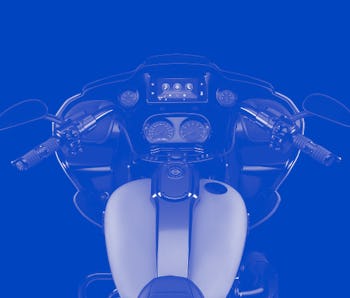Tech
Harley-Davidson is, bizarrely, adding Android Auto to its motorcycles
It’ll be standard on a selection of 2021 models.

Owners of Harley-Davidson’s Touring, Trike, or CVO ranges of motorcycles with the Boom! Box GTS infotainment system will soon be able to add Android Auto via a software update, and the phone-to-vehicle interface will come standard on next year’s models. But wait, isn’t Android Auto for cars? Well, it doesn’t have to be.
If it’s got wheels and a digital dashboard, there’s no reason a motorcycle can’t run Android Auto, or the now similarly misleadingly named, Apple CarPlay. And with a big enough display and support for hands-free headsets, it’s safer than other methods of using a smartphone while driving or riding (though the safest option of all remains to map out your route and/or pick your tunes before heading out, and then ignore your smartphone entirely.)
Update via USB — Owners of suitably equipped bikes and trikes can do the update on their own over USB, or can get it done at a Harley-Davidson dealer. Owners of the appropriate ranges who don’t have the Boom! Box GTS infotainment system but now want one can have it retrofitted to 2014-and-later models. The system includes a 6.5-inch touch screen with Corning Gorilla Glass and supports the H-D App, which lets users check the status of their vehicle remotely, receive service reminders, record their rides, and get a nudge if someone tampers with or tries to steal their ride.
Slowly electrifying — It’s great to see Harley-Davidson rolling out contemporary technology to its largely retro-looking range of products, but it’s going to have to do much more if it’s going to survive the 21st century. To date, it’s released one fully-electric motorcycle, the LiveWire, despite the electric motorcycle market getting new entrants thick and fast, like the Damon Hypersport and the Zero SR/S. While neither are tourers (AKA, armchairs on wheels) per se, they’re attractive options for motorcycle fans, many of whom likely can’t buy more than one, and they’re decidedly more plugged into the zero-emissions zeitgeist.
Harley-Davidson is in a difficult position because the look and, more importantly, the sound of its products is so tied to its identity that changing either it risks ruining what buyers love about it. But the future, apocalyptic or not, is undeniably electric, so it needs to find a way to join that future without alienating the loyalists that keep it in business.